Ross Bay Villa Historic House Museum In Victoria
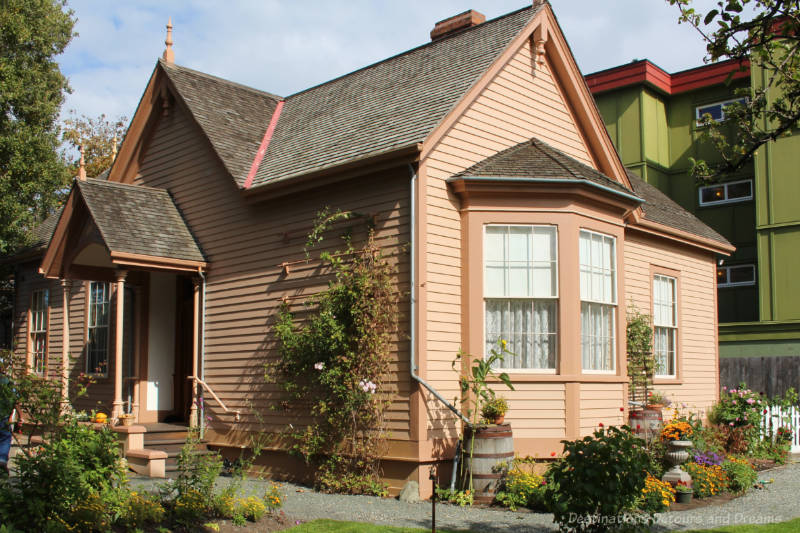
An historic house museum in Victoria, British Columbia, meticulously restored by volunteers to recreate the period of 1865 to 1879
Ross Bay Villa is an historic house museum in Victoria, British Columbia, Canada. Francis James Roscoe and his wife, Anna Letitia, lived in the house from 1865 to 1879. They had five children during that time. The house is now owned by Ross Bay Villa Society and has been restored to the way it would have looked when the Roscoe family lived there. A guided tour gave me a glimpse into their life and a bygone era. I was equally, if not more, fascinated by the stories of the detective work and focus on authenticity in the restoration efforts and the dedication of volunteers involved in preserving this bit of history.
On the Saturday I visited the museum, volunteers were busy in the yard and the house cleaning, weeding, pruning, and picking apples. Another volunteer guided us through the house and told us many stories about the family and the restoration process.
Today the villa is in the heart of Greater Victoria, but when the Gothic-Revival style house was built in 1865, it was located 5 kilometres from Victoria and was surrounded by bush, farmland, and swamp. It was part of a large farm originally owned by Isabella Ross. She began selling off her land in 1858. This parcel of land eventually wound up in the hands of Charles Buxton, who leased it to Francis James Roscoe.
The Roscoes were from England. In 1862, Francis Roscoe, in a partnership with Alfred Fellows, established a hardware business in Victoria. In 1864, he returned to England to marry Anna Letitia Le Breton. The couple made their home in Victoria. Roscoe was elected to the Canadian Parliament in 1874 and served as a Member of Parliament until 1878. He died in December 1878. An article in the Daily Colonist said he died “under painful circumstances between the hours of 8 and 9 o’clock. Deceased has for some time past been suffering from mental depression; but his death was quite unexpected.” In 1879, his family returned to England. The new owners called the house Ross Bay Villa.
Over the years, the villa was home to several families. In 1988, six local businessmen bought the house and rented it out. The house began to deteriorate. Our guide remembered the yard full of dead cars and motorcycles and said the occupants sat atop the junk and tossed beer cans into the street. In 1999, the owners applied for a demolition permit to allow redevelopment. After a number of meetings with city council, the house was saved from destruction when The Land Conservancy agreed to purchase the property and a Restoration Committee was formed to start a 14-year program of volunteer-led restoration.
The volunteers organized a variety of fundraisers. Much of the restoration work itself was done via volunteer labour. All restoration followed the Standards and Guidelines for Conservation of Historic Sites in Canada, a document published by Canada’s Historic Places that provides a set of principles and guidelines for heritage conservation. The Ross Bay Villa Society was formed in 2013 by knowledgeable volunteers. In 2015, the society took over ownership of the building.
Although no plans for the house have been found, it is believed to have been designed by Wright and Sanders, Victoria’s first professional architects. Certain features of the house are similar to other known Wright and Sanders designs. An April 1865 newspaper ad featured a tender call by Wright and Sanders for a “suburban residence.”
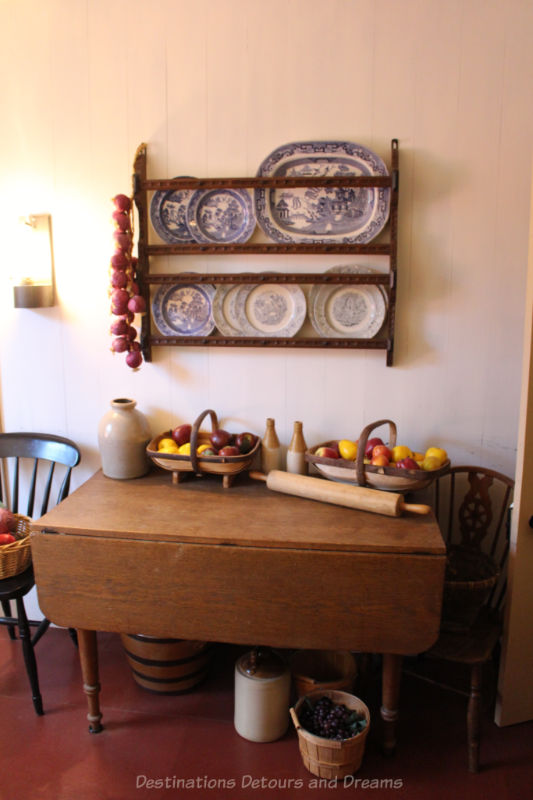
The kitchen and servants’ area (the Roscoes had a nanny and a cook) would have been in the back of the house, the family bedrooms in the middle, and the more public rooms (like the dining room) in the front. Changes had been made to the building over the years. When restoration began, the kitchen was in the middle of the house, in what had likely been the master bedroom at the time the Roscoes lived there. Our guide relayed this information to us. We also heard the story from a volunteer working in the yard. He had grown up in the house, living there during the 1950s and 1960s. The kitchen is now, once again, at the back of the house.
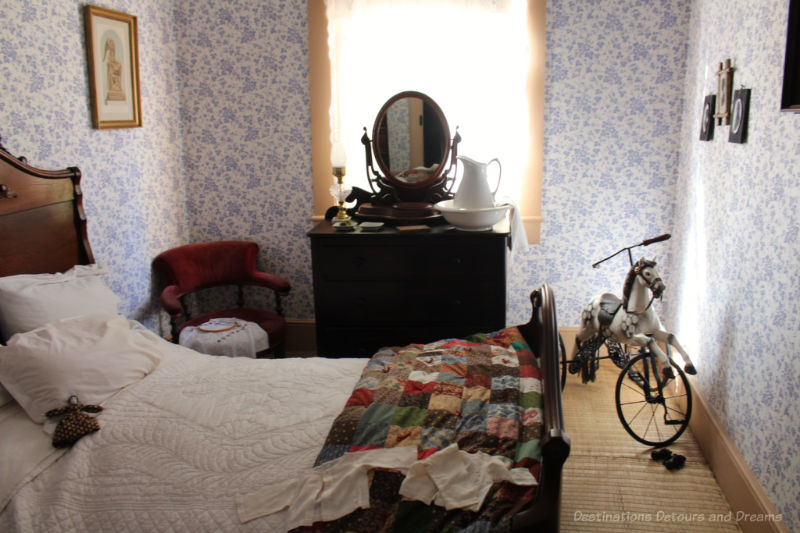
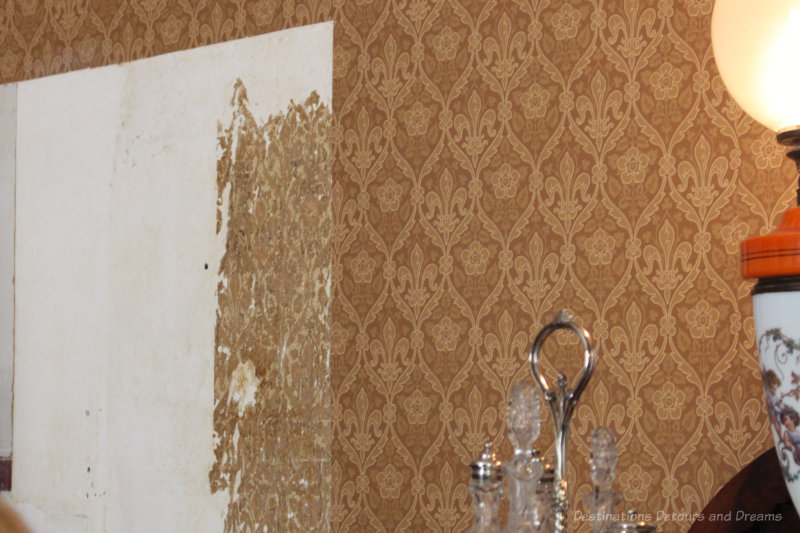
Volunteers removed old wallpaper, layer upon layer, with scalpels. Wallpapers and historic boarders were recreated. Sample were taken and scanned into a computer for a designer to recreate the designs. The wallpaper was then created in a factory in England that specializes in the same method of wallpaper printing that would have been used for the original wallpaper.
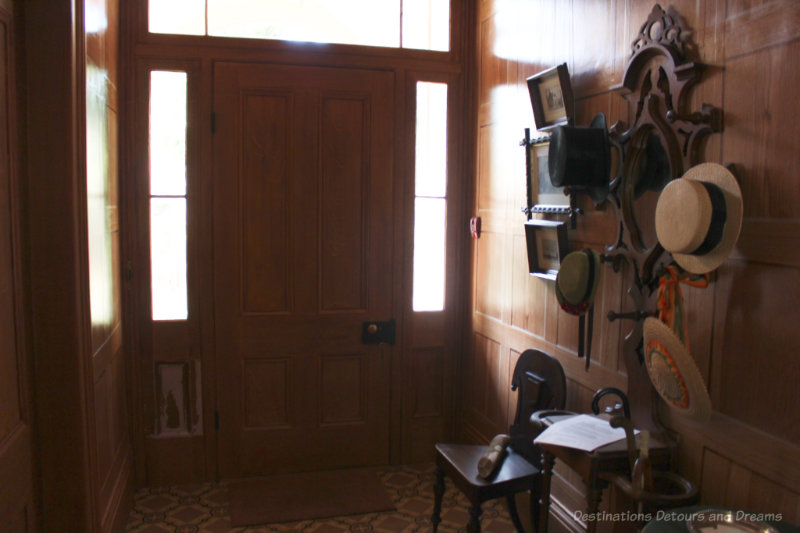
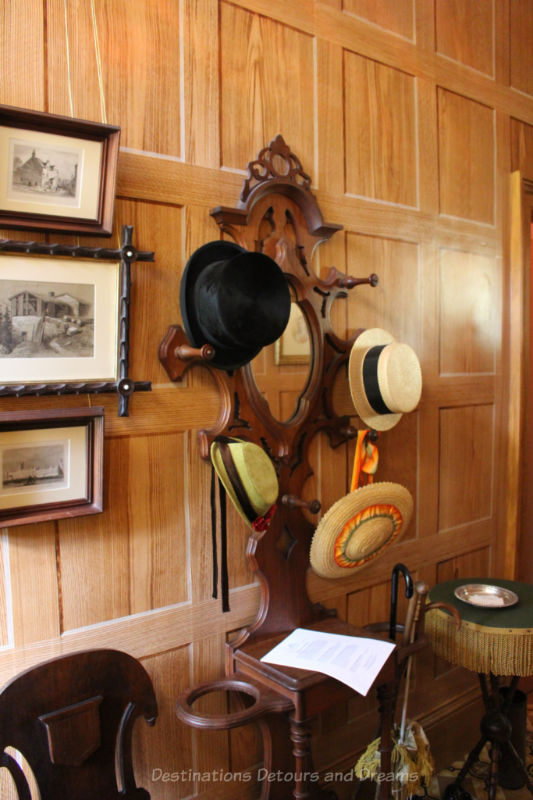
The house has been furnished with items appropriate to the period. Letters, journals, old photographs, and the list of auction items from the auction Mrs. Roscoe held before returning to England were used to determine what furnishings were needed. Some items were purchased. Many were donated.
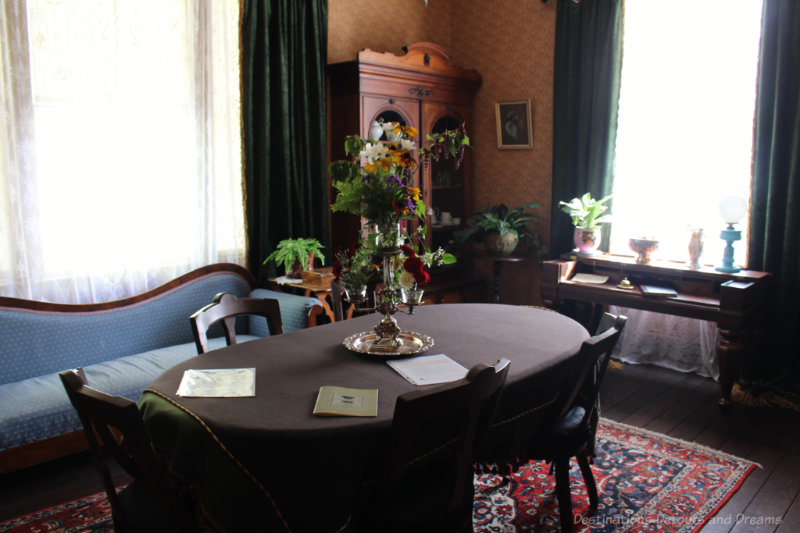
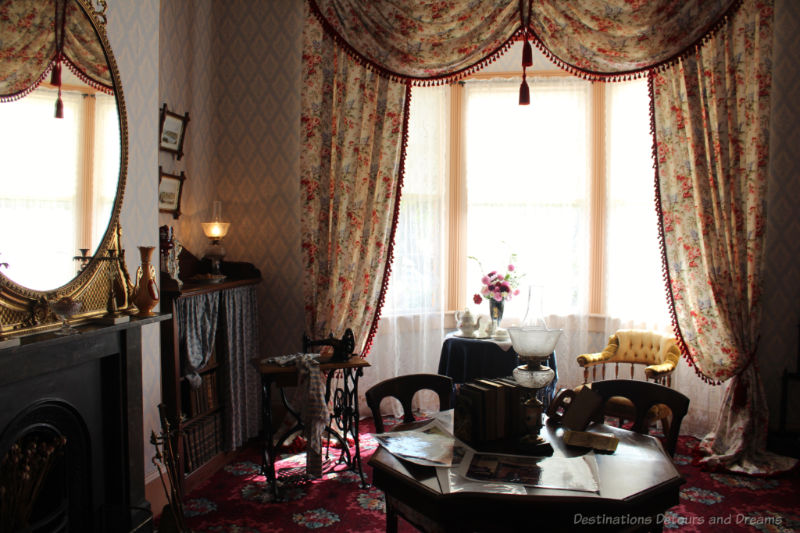
A bookcase in the drawing room is original to the house. It was especially made for the niche beside the fireplace. It was donated by Mr. and Mrs. Hewison who lived in the house from 1952 to 1988.
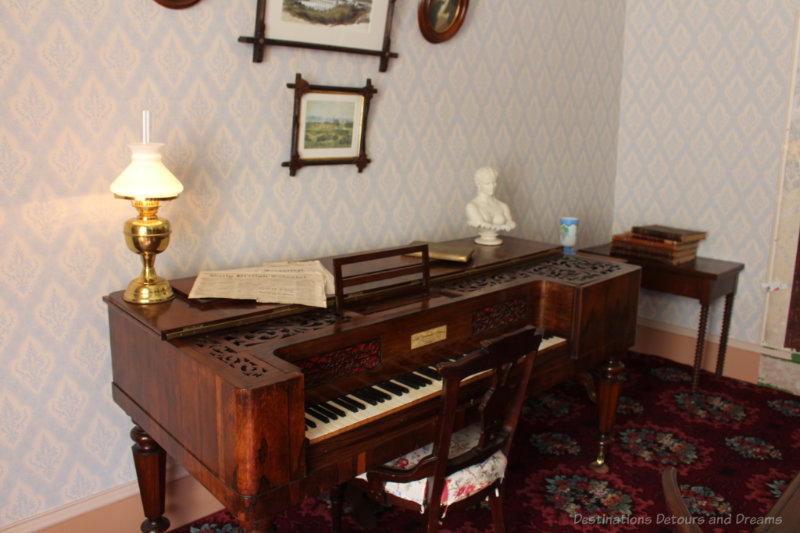
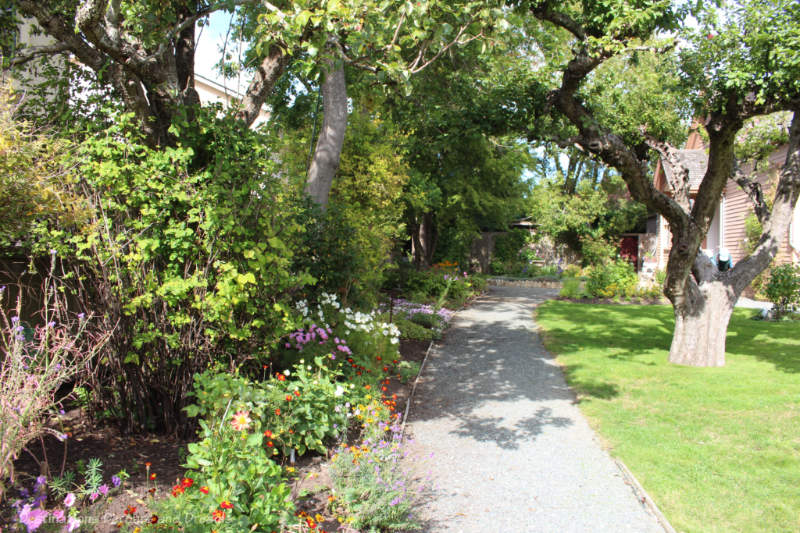
The yard around the house has also been carefully recreated. I was impressed by the old-fashioned garden feel. Modern shrubs not available in Victoria in the 1860s and 1870s were removed as part of the clean-up. Again photographs, journal entries, and letters were used to determine what the yard might have looked like. An archaeological dig revealed the locations of original pathways.
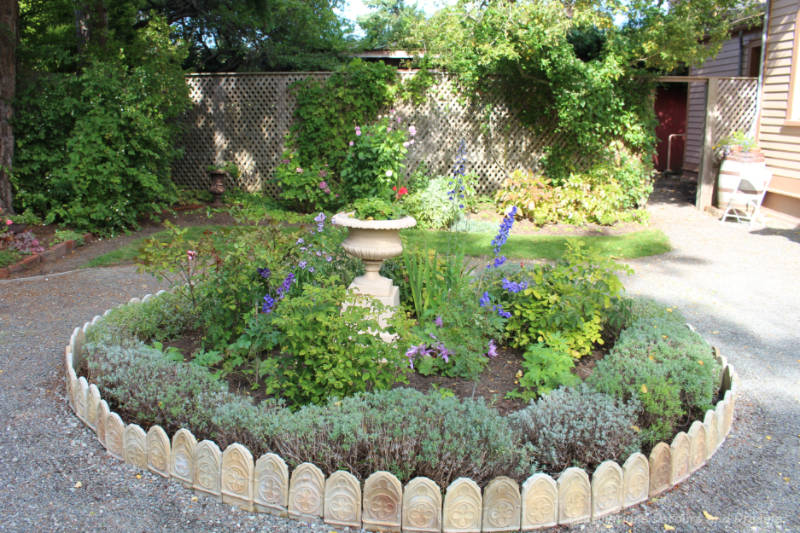
An 1889 photograph of the exterior of the house showed a circular garden. The archaeological dig uncovered bits of broken stoneware Gothic-designed garden edging tiles made by Doulton of England. These tiles were listed on the 1879 auction list. The tiles were reproduced and installed around the circular flowerbed.
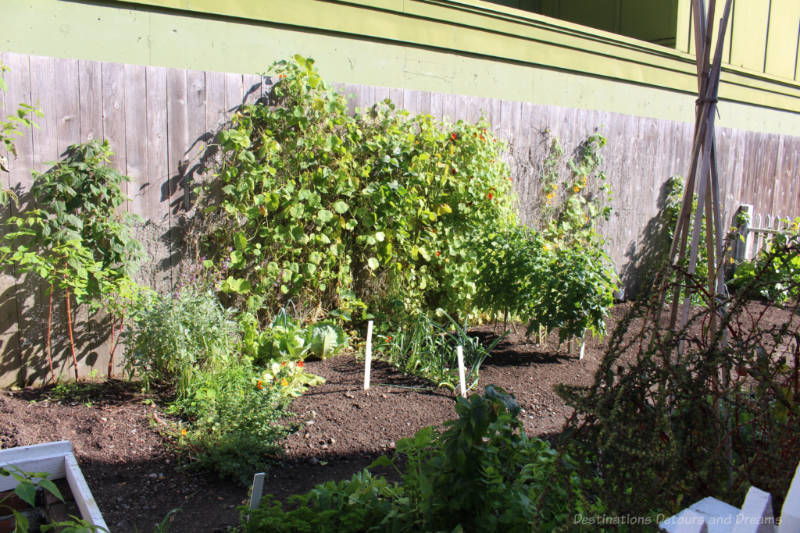
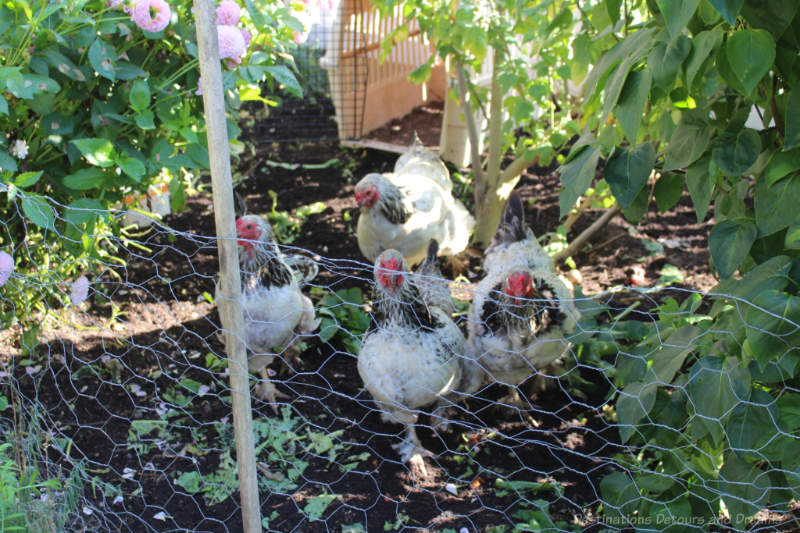
Ross Bay Villa conducts tours on Saturdays at 2 pm. Special tours by appointment can be arranged.
Never miss a story. Sign up for Destinations Detours and Dreams free monthly e-newsletter and receive behind-the-scenes information and sneak peeks ahead.
PIN IT
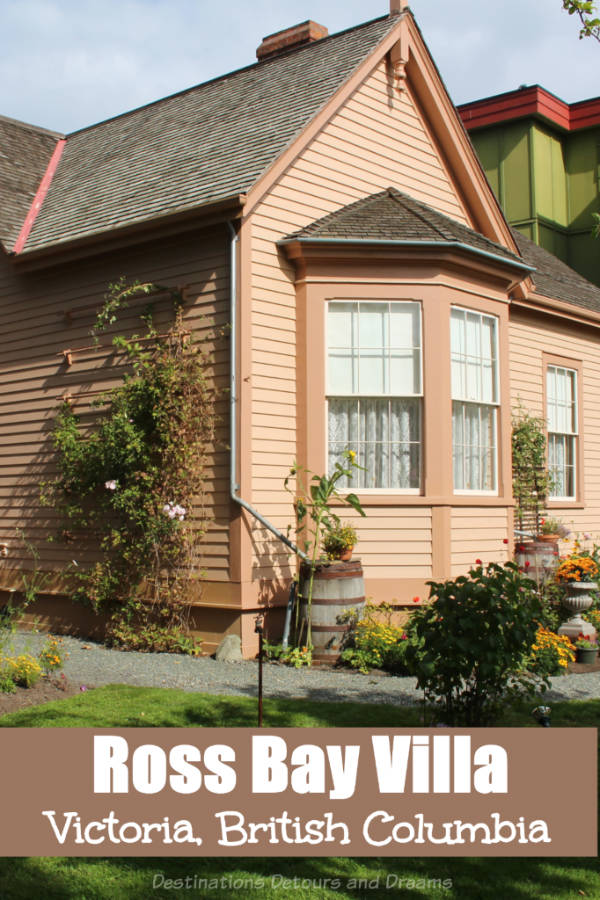



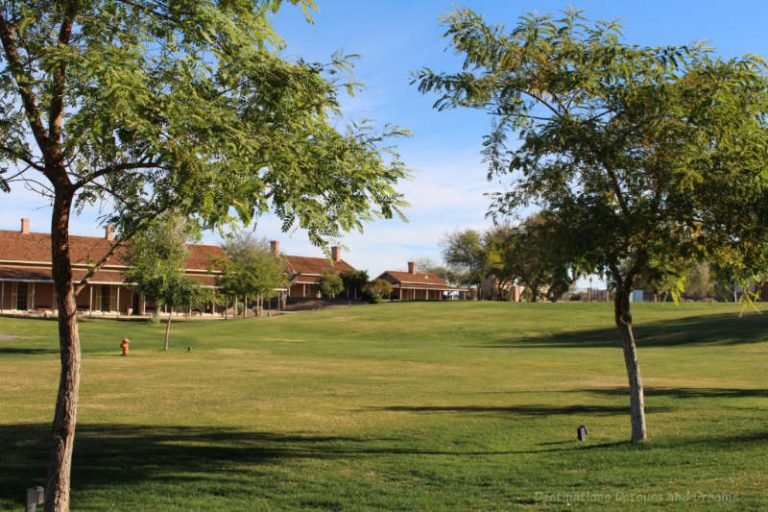
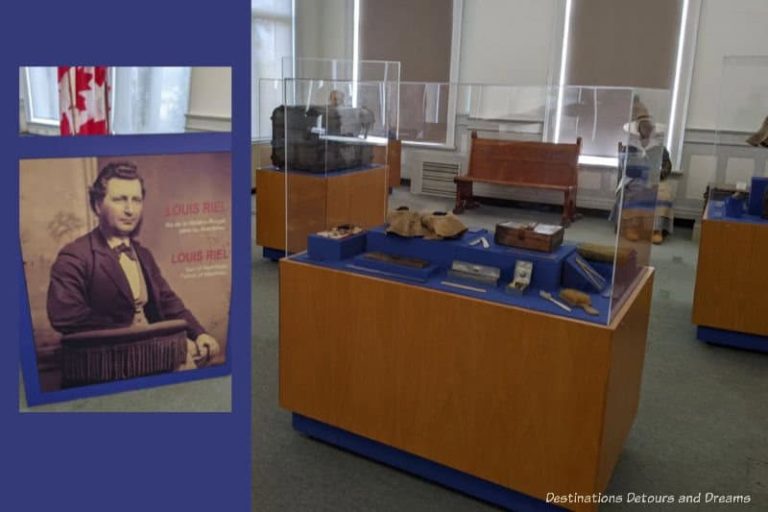
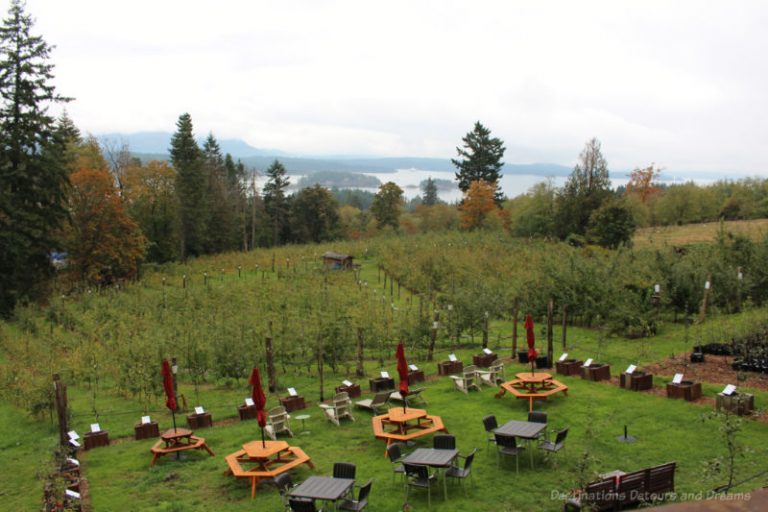
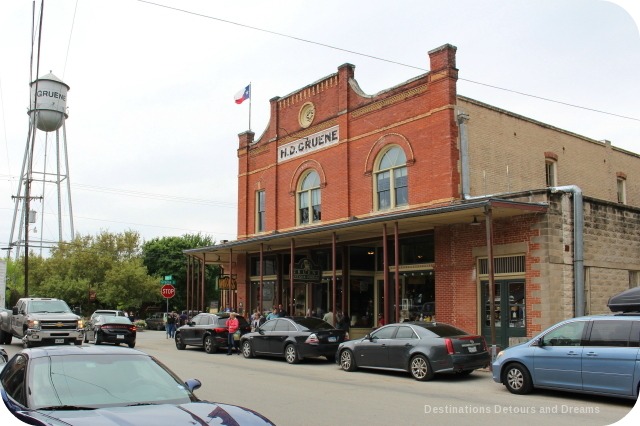
What a lot of painstaking work to restore this house! Beautifully done.
Deb, I find the painstaking work that goes into restorations like this fascinating. These people have a great dedication to authenticity.
What a beautiful and meticulous restoration. Good chance the house never looked that perfect.
Ken, definitely a meticulous restoration. There is a chance that parts of the front of the house (the part that received guests) may have looked that perfect at times, but I suspect the rest of it might have been less so when the house was actually lived in and in use.